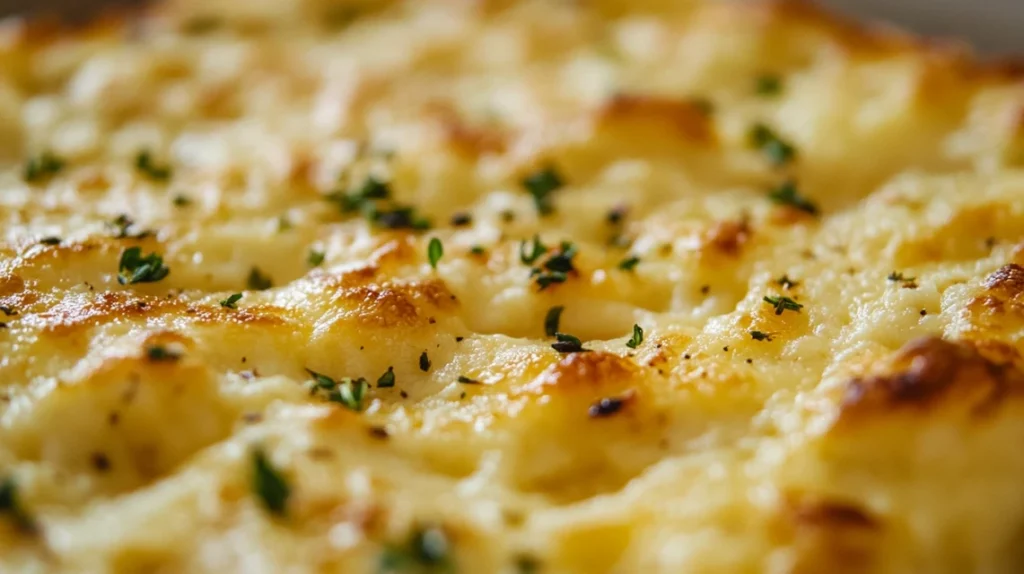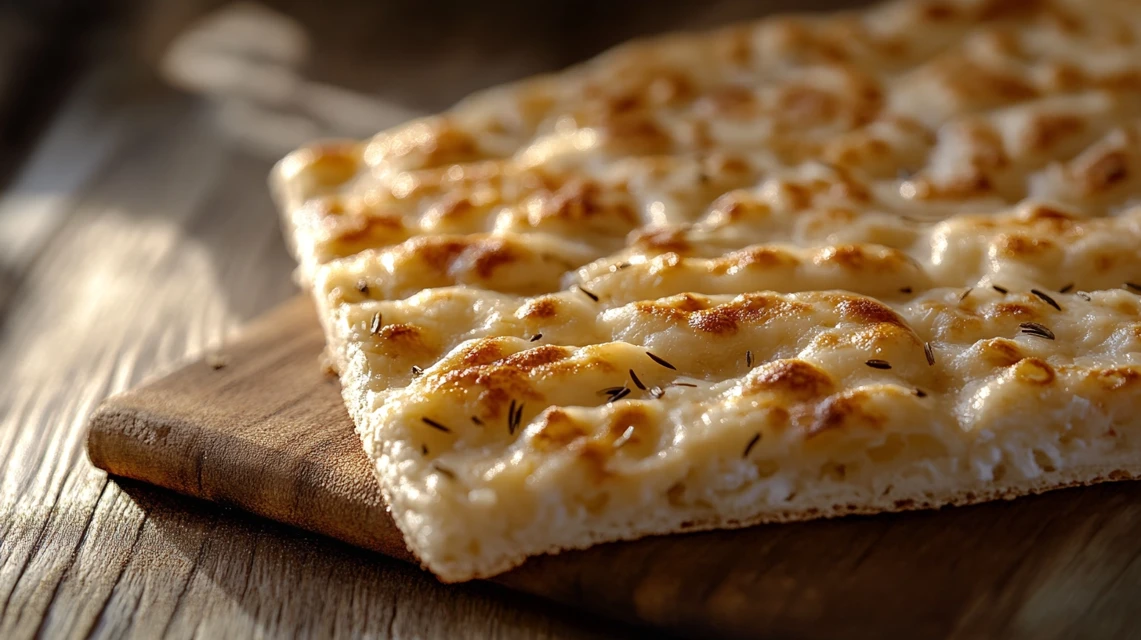Have you ever stood in front of your oven, watching your cottage cheese flatbread, not sure if it’s ready? How to Tell When Cottage Cheese Flatbread Is Done We’ve all been there. Getting the timing right is super important – it can be the difference between a tasty, protein-packed bread and something that’s either too doughy or too dry.
First of all, cottage cheese flatbread is special because it’s both healthy and easy to make in different ways. But to get that perfect mix of crispy outside and soft, cheesy inside, you need to watch it carefully while it bakes.
After you learn the right signs, you’ll spot when your bread is ready much faster. Make it a few times, and you’ll know right away if it’s ready to come out of the oven. You’ll make great bread every time, with the perfect texture and all the good protein you want.
How to Tell When Cottage Cheese Flatbread Is Done: 5 Key Signs

Want to know if your cheese bread is ready? Here are five easy ways to check. First, look at the color – the top should be light brown all over. This means it’s cooked evenly.
Touch the top softly. A ready bread feels firm and bounces back like a sponge when you push it. Now tap the top lightly – listen for a hollow sound like when you knock on an empty box. This tells you the bread has cooked inside too.
Check the sides of your bread. You’ll see them puff up a little when the bread has dried enough. Last, grab a toothpick and stick it into the thickest part. If the toothpick comes out clean, your bread is ready to eat!
When you see all these signs, you can take your bread out! It’s that easy.
check out our detailed cottage cheese flatbread guide.
Signs Your Cottage Cheese Flatbread Is Done: Visual Guide
Color Guide
How to Tell When Cottage Cheese Flatbread Is Done: When you watch your cheese bread bake, the colors will tell you if it’s done. At first, it’s very light – almost white. Then, as it bakes, it turns light brown. The cheese melts and makes spots all over the top, which is exactly what you want.
When it’s just right, most of the top will be light brown with some lighter spots where the cheese melted. This makes it look a bit like marble. The edges should be a bit darker, but not too dark or burnt. This means the water has baked out just right.
Don’t forget to check the bottom! It should be light brown all over. You don’t want to see any dark burnt spots or light raw spots.
Texture Signs
The way your bread looks and feels changes as it bakes. At first, the top is smooth and a bit shiny. Then, as it bakes more, some parts get bumpy where the cheese sits on top, while other parts stay smooth where the cheese has melted into the bread.
You’ll also see tiny holes pop up across the top – this is good! It means the inside is cooking right. At the edges, you’ll notice small bubbles and the bread might rise a bit. This means the water is baking out and your bread is getting firm, just like it should.
visit our cottage cheese flatbread guide.
Testing When Cottage Cheese Flatbread Is Done: Physical Methods
Want to know if your bread is ready? Try these easy checks. Tap the top with your knuckles or a wooden spoon in different spots. Listen for a hollow sound – like tapping an empty box. This tells you the inside has cooked through.
Now for the touch test. Grab an oven mitt to protect your hand. Press the top gently. Good bread will spring back fast, just like a sponge. But if you see a dent, keep baking.
Got a food thermometer? Great! Poke it at an angle into the thickest part. When your bread hits 190°F (88°C), it’s ready.
Remember these tips! Press gently so you don’t flatten your bread. Check several spots too – your bread might cook faster in some places than others.
Cottage Cheese Flatbread Doneness: Time and Temperature Guide

To make the best cheese bread, you need to get the time and heat just right. First, turn your oven on to 400°F (200°C) and let it get hot before you put the bread in. This heat helps cook the bread evenly and make it golden brown on top. If the oven is too cool, your bread will take too long and might get soggy. If it’s too hot, the top might burn while the inside is still raw.
How thick your bread is changes how long it needs to bake:
- Thin bread (about as thick as your pinky) needs 12-15 minutes
- Medium bread (about as thick as two fingers) needs 15-18 minutes
- Thick bread (about as thick as three fingers) needs 18-22 minutes
Here’s what happens as your bread bakes:
- After 5 minutes: The top starts to set
- After 8-10 minutes: The edges start turning light brown
- After 12-15 minutes: The cheese melts and makes spots on top
Different ovens bake differently:
- Regular ovens might need to be a bit hotter
- Ovens with fans need to be a bit cooler and need 2 minutes less time
- Gas ovens might need 2-3 extra minutes
Watch out for these mistakes:
- Don’t keep opening the oven door – this lets the heat out
- Make sure the oven is fully hot before putting the bread in
- Don’t take the bread out just because the top looks done – check the inside too
Common Doneness Problems and Solutions
Your bread might have a raw middle if your cheese has too much water or your oven heats unevenly. Here’s what to do: Take your cheese and squeeze out all the water with a clean cloth before you start baking. When you see brown edges but find a raw middle, wrap foil around the edges and bake for 3 more minutes.
The edges might get too brown and hard while the middle is just right. This happens when the oven is too hot or the heat isn’t even. To fix this, either turn your oven down by 25°F or move your pan up higher in the oven. You can also put foil over the edges for the last 5 minutes of baking to protect them.
Sometimes your bread might cook unevenly, with some spots darker than others. This can happen if your dough isn’t the same thickness everywhere, if your oven has hot spots, or if the pan isn’t in the right place. To fix this:
- Roll your dough to the same thickness
- Turn the pan around halfway through baking
- Use an oven thermometer to check for hot spots
The bread might also end up too tough on top or too doughy in the middle. This usually means there’s too much or too little water from the cheese, or the oven temperature isn’t right. Make sure you’re using the right amount of cheese and keep an eye on your oven’s temperature while baking.
Frequently Asked Questions
How do you know when cottage cheese flatbread is done?
Look for a light brown color on top, with some spots where the cheese has melted. Touch the top – it should feel firm and pop back up when you press it. Tap it lightly – you’ll hear a hollow sound, like tapping on an empty box. Stick a toothpick in the middle – if it comes out clean with no wet dough on it, your bread is ready!
How do you know when flat bread is done?
Your flatbread should look light brown on top. How to Tell When Cottage Cheese Flatbread Is Done: When you touch it, it should feel firm but still a bit soft. Look for some small bubbles on the surface – this shows it’s cooked well. The bottom should look light brown too, not pale or too dark.
Why is my cottage cheese flatbread soggy?
Your bread might stay soggy if:
- You didn’t drain the cheese well enough – squeeze out extra water first
- Your oven wasn’t hot enough when you put the bread in
- You made the dough too thick
- You opened the oven door too many times while baking
- You didn’t let your oven get hot enough before starting
How long to heat flatbread in the oven?
For fresh cheese flatbread:
- Thin bread needs 12-15 minutes at 400°F
- Medium bread needs 15-18 minutes at 400°F
- Thick bread needs 18-22 minutes at 400°F
To warm up already baked flatbread:
Wrap it in foil if you want it to stay soft
Heat it for 2-3 minutes at 350°F
Watch it closely so it doesn’t get too crispy
How do I know if I’ve overbaked my flatbread?
You can spot overcooked cheese bread easily. Look for these signs:
The top will have dark brown or black spots instead of a nice golden color. The edges will turn too hard and curl up too much, not just get crispy. If you look at the bottom, you’ll see it’s too dark brown or even burnt in some spots.
When you break the bread open, you’ll find it’s dry and falls apart instead of staying soft. And instead of smelling like cheese, it will smell burnt.
Conclusion
To make great cheese bread every time, you need to look for many signs that tell you it’s done. Look at the bread – it should have a light brown top, edges that aren’t too dark, and spots where the cheese has melted. Then test it – tap it to hear a hollow sound, touch it to feel it spring back, and stick a toothpick in to make sure it comes out clean.
How to Tell When Cottage Cheese Flatbread Is Done: The more you make this bread, the better you’ll get at knowing when it’s done. Start by following the basic steps we shared, but pay attention to how your oven works – every oven is different! Watch how things like cold or warm ingredients, different pans, and even the weather can change how your bread turns out.
Think of each time you make the bread as a chance to learn something new. Maybe write down what worked and what didn’t. Soon, you’ll know exactly how to make perfect cheese bread in your kitchen, every single time.

